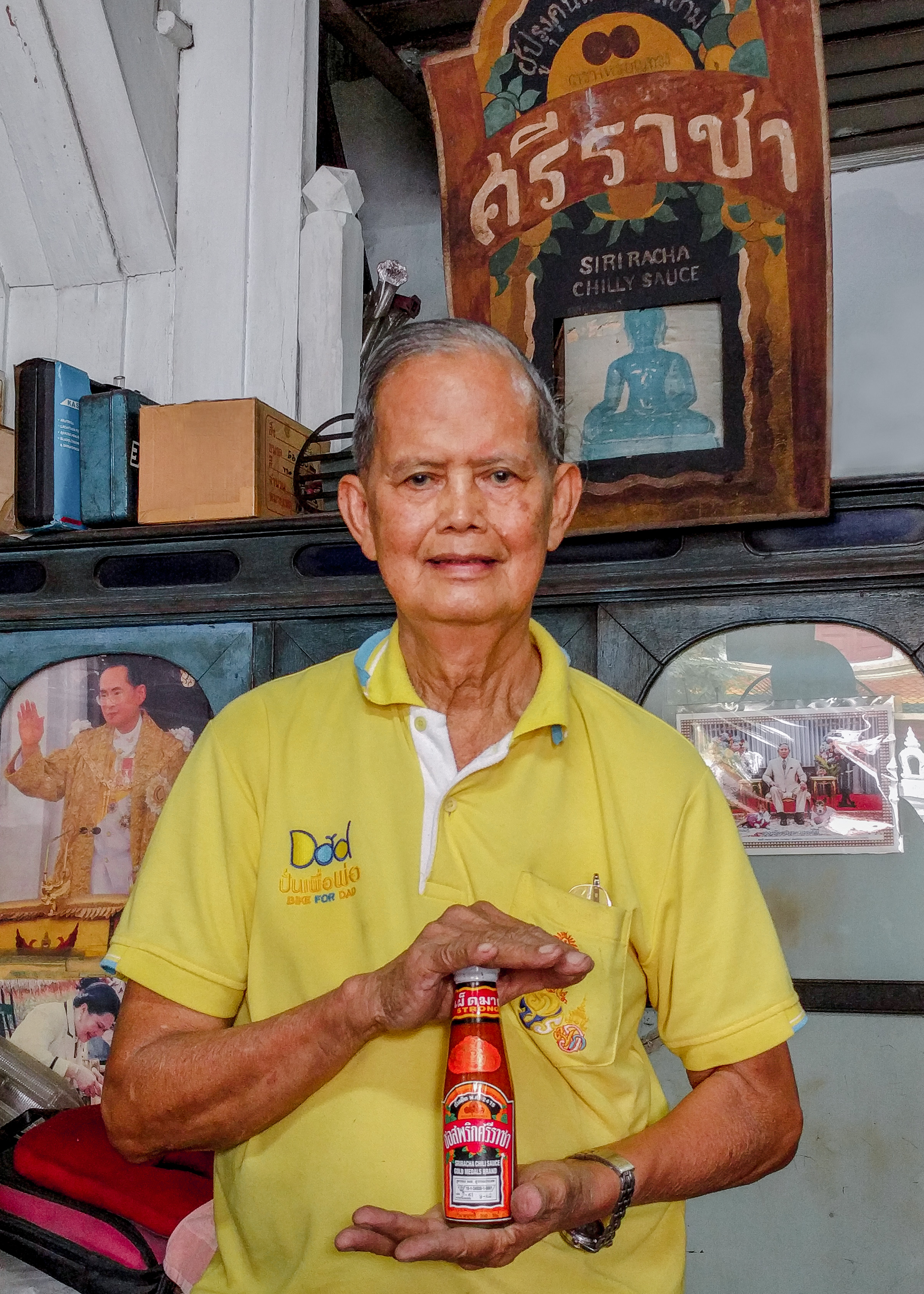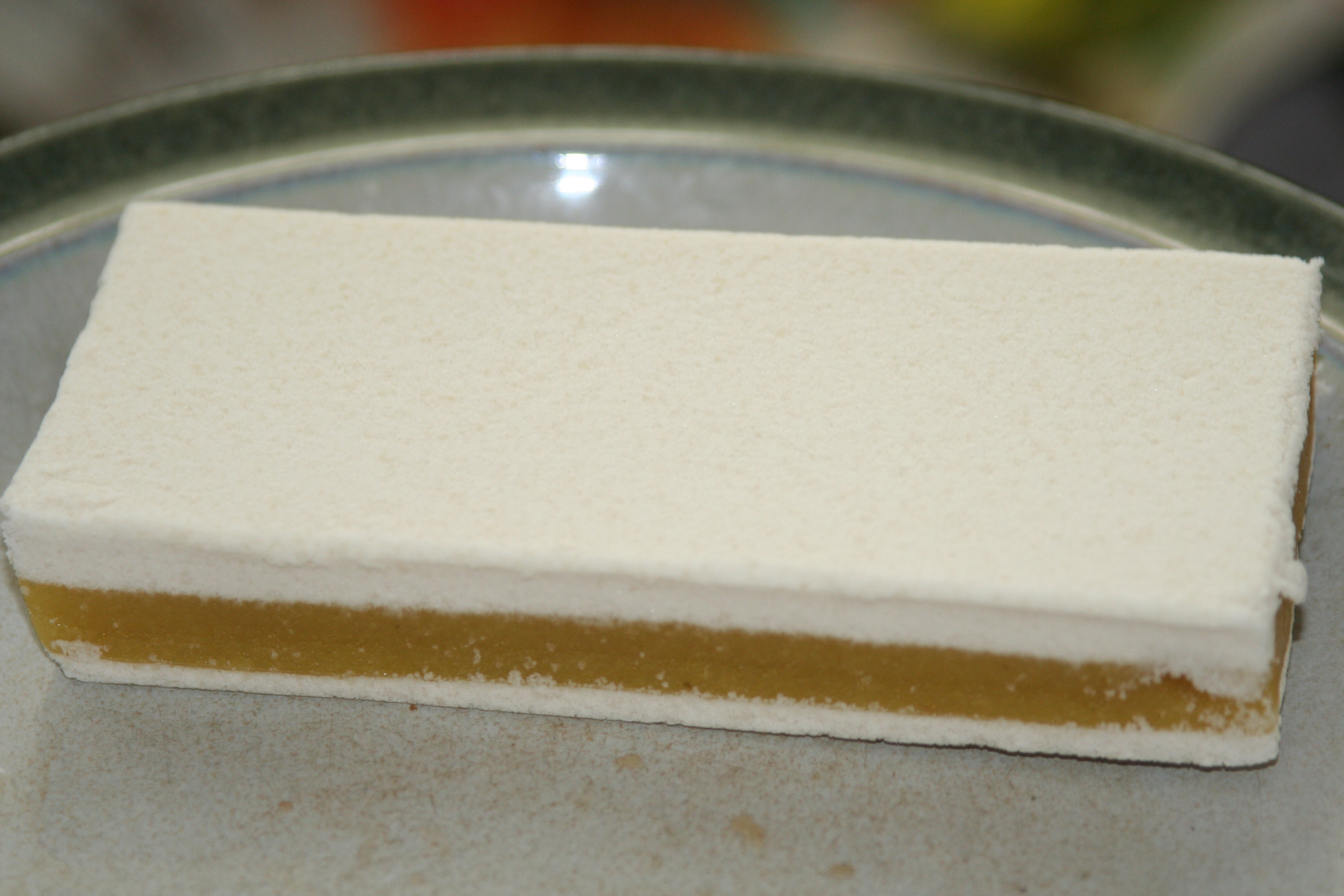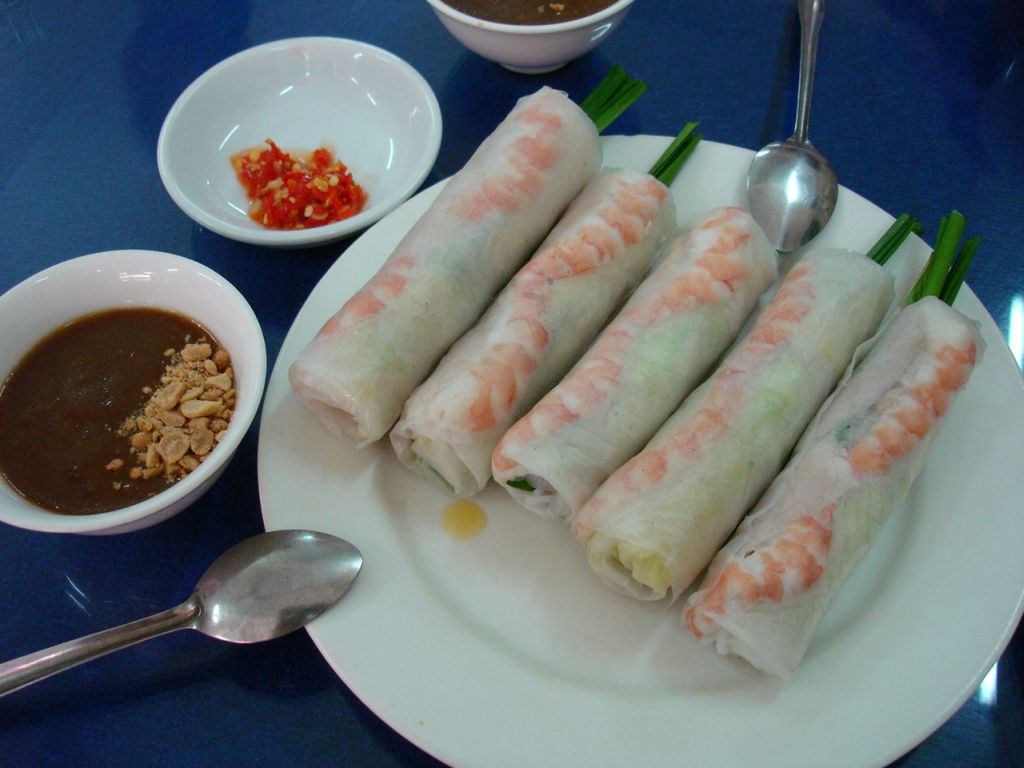|
Tương
''Tương'' (, Chữ Hán: 醬) is the name applied to a variety of condiments, a kind of fermented bean paste made from soybean and commonly used in Vietnamese cuisine. Originally, the term ''tương'' refers to a salty paste made from fermented soybeans, which is popular in vegetarian meals, particularly those prepared and eaten by Vietnamese Buddhist monks. It is also the most typical dipping sauce for summer rolls (''gỏi cuốn''). The paste, which is generally dark brown in color, is produced by adding the fungus ''Aspergillus oryzae'' to roasted soybeans, which are then allowed to naturally ferment in a jar with water until it develops an umami flavor. Other ingredients, such as glutinous rice or maize powder, salt, or water, may also be used. ''Tương'' is similar to the Chinese yellow soybean paste, though the latter is generally saltier and thicker in texture. ''Tương'' may range in consistency from a thick paste to a thin liquid. Some varieties, such as that prepa ... [...More Info...] [...Related Items...] OR: [Wikipedia] [Google] [Baidu] |
Fermented Bean Paste
Fermented bean paste is a category of fermented foods typically made from ground soybeans, which are indigenous to the cuisines of East, South and Southeast Asia. In some cases, such as the production of ''miso'', other varieties of beans, such as broad beans, may also be used. The pastes are usually salty and savoury, but may also be spicy, and are used as a condiment to flavour foods such as stir-fries, stews, and soups. The colours of such pastes range from light tan to reddish brown and dark brown. The differences in colour are due to different production methods, such as the conditions of fermentation, the addition of wheat flour, pulverized mantou, rice, or sugar and the presence of different microflora, such as bacteria or molds used in their production, as well as whether the soybeans are roasted (as in ''chunjang'') or aged (as in ''tauco'') before being ground. Fermented bean pastes are sometimes the starting material used in producing soy sauces, such as tamari, o ... [...More Info...] [...Related Items...] OR: [Wikipedia] [Google] [Baidu] |
Cuisine Of Vietnam
Vietnamese cuisine encompasses the foods and beverages of Vietnam. Meals feature a combination of five fundamental tastes ( vi, ngũ vị, links=no, label=none): sweet, salty, bitter, sour, and spicy. The distinctive nature of each dish reflects one or more elements (nutrients, colors, et cetera), which are also based around a five-pronged philosophy. Vietnamese recipes use ingredients like lemongrass, ginger, mint, Vietnamese mint, long coriander, Saigon cinnamon, bird's eye chili, lime, and Thai basil leaves. Traditional Vietnamese cooking has often been characterised as using fresh ingredients, not using much dairy nor oil, having interesting textures, and making use of herbs and vegetables. The cuisine is also low in sugar and is almost always naturally gluten-free, as many of the dishes are rice-based instead of wheat-based, made with rice noodles, papers and flour. Vietnamese cuisine is strongly influenced not only by the cuisines of neighboring China, Cambodia and Lao ... [...More Info...] [...Related Items...] OR: [Wikipedia] [Google] [Baidu] |
Sriracha Sauce
Sriracha ( or ; th, ศรีราชา, ) is a type of hot sauce or chili sauce made from a paste of chili peppers, distilled vinegar, garlic, sugar, and salt. Use In Thailand, sriracha is frequently used as a dipping sauce, particularly for seafood and omelets. In Vietnamese cuisine, sriracha appears as a condiment for phở and fried noodles, as a topping for spring rolls (''chả giò''), and in sauces. Sriracha is also eaten in soup, on eggs and burgers. Jams, lollipops, and cocktails have all been made using the sauce, and sriracha-flavored potato chips have been marketed. Origin The sauce was first produced by a Thai woman named Thanom Chakkapak in the town of Si Racha (or Sriracha), Thailand. Variations Thailand In Thailand, the sauce is most often called ''sot Siracha'' ( th, ซอสศรีราชา) and only sometimes ''nam phrik Siracha'' ( th, น้ำพริกศรีราชา). Traditional Thai sriracha sauce tends to be tangier in taste ... [...More Info...] [...Related Items...] OR: [Wikipedia] [Google] [Baidu] |
Chữ Hán
Chữ Hán (𡨸漢, literally "Chinese characters", ), Chữ Nho (𡨸儒, literally "Confucian characters", ) or Hán tự (漢字, ), is the Vietnamese term for Chinese characters, used to write Văn ngôn (which is a form of Classical Chinese used in Vietnam during the feudal period) and Sino-Vietnamese vocabulary in Vietnamese language, was officially used in Vietnam after the Red River Delta region was incorporated into the Han dynasty and continued to be used until the early 20th century (111 BC – 1919 AD). Terminology * Stroke - nét * Stroke order - Bút thuận (筆順) * Radical - Bộ thủ (部首) * Regular script - Khải thư (楷書) * Simplified characters - chữ giản thể (𡨸簡體) * Traditional characters - chữ phồn thể (𡨸繁體) * Văn ngôn - Literary Chinese (文言) * Hán văn - synonym of Literary Chinese (漢文) * Kangxi radicals - Bộ thủ Khang Hi History In the late 3rd century BC, the newly established Qin dynasty made ... [...More Info...] [...Related Items...] OR: [Wikipedia] [Google] [Baidu] |
Bánh đúc
''Bánh đúc'' is a Vietnamese ''bánh'' (cake). There are two main types of bánh đúc, the white Northern Vietnamese cake and the green Southern version. Northern Vietnamese version In northern Vietnam, ''bánh đúc'' is a cake made from either non-glutinous rice flour or corn flour. It is white in color and has a soft texture and mild flavour. It is typically garnished with savory ingredients such as ground pork, ''tôm chấy'' (grilled ground shrimp), fried onions, sesame seeds, salt, peanuts, lime juice, and soy sauce or fish sauce. Although it may be eaten on its own, it may also be served hot, accompanied by steamed meat or mushrooms. ''Bánh đúc'' is available at small stalls and is eaten throughout the day. Southern Vietnamese version In southern Vietnam, ''bánh đúc'' is a dessert made from non-glutinous rice flour. It takes the form of gelatinous blocks that are often colored green by the addition of ''Pandanus amaryllifolius'' leaf extract. It is cooked by bo ... [...More Info...] [...Related Items...] OR: [Wikipedia] [Google] [Baidu] |
Water Spinach
''Ipomoea aquatica'', widely known as water spinach, is a semi- aquatic, tropical plant grown as a vegetable for its tender shoots. ''I. aquatica'' is generally believed to have been first domesticated in Southeast Asia. It is widely cultivated in Southeast Asia, East Asia, and South Asia. It grows abundantly near waterways and requires little to no care. Description ''Ipomoea aquatica'' grows in water or on moist soil. Its stems are or longer, rooting at the nodes, and they are hollow and can float. The leaves vary from typically sagittate (arrow head-shaped) to lanceolate, long and broad. The flowers are trumpet-shaped, in diameter, and usually white in colour with a mauve centre. Propagation is either by planting cuttings of the stem shoots, which will root along nodes, or by planting the seeds from flowers that produce seed pods. Names ''Ipomoea aquatica'' is widely known as kangkong (also spelled kangkung), its common name in Maritime Southeast Asia, which possibly or ... [...More Info...] [...Related Items...] OR: [Wikipedia] [Google] [Baidu] |
Bánh ướt Thịt Nướng
In Vietnamese, the term ''bánh'' ( or , Chữ Nôm: 餅) translates loosely as "cake" or "bread", but refers to a wide variety of prepared foods that can easily be eaten by hands or chopsticks. With the addition of qualifying adjectives, ''bánh'' refers to a wide variety of sweet or savory, distinct cakes, buns, pastries, sandwiches, and other food items, which may be cooked by steaming, baking, frying, deep-frying, or boiling. Foods made from wheat flour or rice flour are generally called ''bánh'', but the term may also refer to certain varieties of noodle and fish cake dishes, such as ''bánh canh'' and ''bánh hỏi''. Each variety of ''bánh'' is designated by a descriptive word or phrase that follows the word ''bánh'', such as ''bánh bò'' () or ''bánh chuối'' (). ''Bánh'' that are wrapped in leaves before steaming are called ''bánh lá'' (). In Vietnamese, the term ' is not limited to Vietnamese cuisine: it applies equally to items as varied as fortune cooki ... [...More Info...] [...Related Items...] OR: [Wikipedia] [Google] [Baidu] |
Nem Nướng
(literally "grilled spring rolls") is Vietnamese grilled pork sausage or grilled meatballs, and a popular Vietnamese food item, sometimes served as an individual appetizer or snack, or served with rice noodles or rice as a main course. is a specialty of Province (). ''Nem nướng'' is a rustic dish, originating from Ninh Hoa, a northern district of Khanh Hoa province, about 30 km from the coastal city. Ingredients and cooking method is made of ground pork with between a third and a half pork fat. The meat is typically flavoured with chopped shallots, crushed garlic, fish sauce, sugar and black pepper. It is formed into sausages or meatballs and then grilled or baked. Serving can be eaten alone as an appetizer or snack, and dipped in dipping sauce" or with a peanut dip. is fish sauce diluted with water and flavored with sugar, lime juice, chopped raw garlic, chopped fresh bird's eye chili (Thai chili)/cayenne pepper, and sometimes with vinegar. The peanut sauce ... [...More Info...] [...Related Items...] OR: [Wikipedia] [Google] [Baidu] |
Chạo Tôm
''Chạo tôm'' is a traditional Vietnamese dish that comes from the Huế region of Central Vietnam. It consists of shrimp surimi grilled on a sugar cane stick. It is often presented as a dish during large banquets prepared for weddings, holidays, or similar special events. Chao tom.jpg, ''Chạo tôm'' See also * List of seafood dishes This is a list of notable seafood dishes. Seafood dishes are food dishes which use seafood (fish, shellfish or seaweed) as primary ingredients, and are ready to be served or eaten with any needed preparation or cooking completed. Many fish or ... * References *. * . Culture in Huế Shrimp dishes Sugar Vietnamese seafood dishes {{Vietnam-cuisine-stub ... [...More Info...] [...Related Items...] OR: [Wikipedia] [Google] [Baidu] |
Bò Bía
Popiah () is a Fujianese/ Teochew-style fresh spring roll filled with an assortment of fresh, dried, and cooked ingredients, eaten during the Qingming Festival and other celebratory occasions. ''The dish is'' made by the people and diaspora of Fujian province of Mainland China (in Quanzhou, Xiamen, and Zhangzhou), neighbouring Chaoshan district, and by the Teochew and Hoklo diaspora in various regions throughout Southeast Asia and in Taiwan (due to the majority of Taiwanese being Hoklo), The origin of popiah dates back to the 17th century. Etymology In the Chaoshan dialect and Hokkien language, ''popiah'' is pronounced as /poʔ˩piã˥˧/ (), which means "thin flatbread/cake". Depending an the regions in Fujian, it is also commonly referred to as /lun˩piã˥˧/ (), which is the etymological origin of "lumpia" in Indonesia and the Philippines. It is referred to as ''rùnbǐng'' () or ''báobǐng'' () in Mandarin, and also as ''bópíjuǎn'' (). Wrapper and fillings A ''popi ... [...More Info...] [...Related Items...] OR: [Wikipedia] [Google] [Baidu] |
Gỏi Cuốn
''Gỏi cuốn'' or nem cuốn, salad roll, summer roll, fresh spring roll, spring roll, rice paper roll, is a Vietnamese dish traditionally consisting of pork, prawn, vegetables, ''bún'' (rice vermicelli), and other ingredients wrapped in Vietnamese ''bánh tráng'' (commonly known as rice paper or cold roll). Unlike other spring roll dishes which are believed to be originated from China, Vietnamese gỏi cuốn is the country's creation using rice paper. Gỏi cuốn are served fresh, unlike similar rolls that are served fried, like the Vietnamese ''chả giò''. They are served at room temperature (or cooled) and are not deep-fried or cooked on the outside. These rolls are considered to be a very popular appetizer with customers in Vietnamese restaurants. Preparation The ''bánh tráng'' (rice paper) is dipped in water, then laid flat on a plate with the desired amount of ingredients placed on top. The fresh ''gỏi cuốn'' is then rolled up and ready to be eaten. ''Gỏi ... [...More Info...] [...Related Items...] OR: [Wikipedia] [Google] [Baidu] |






